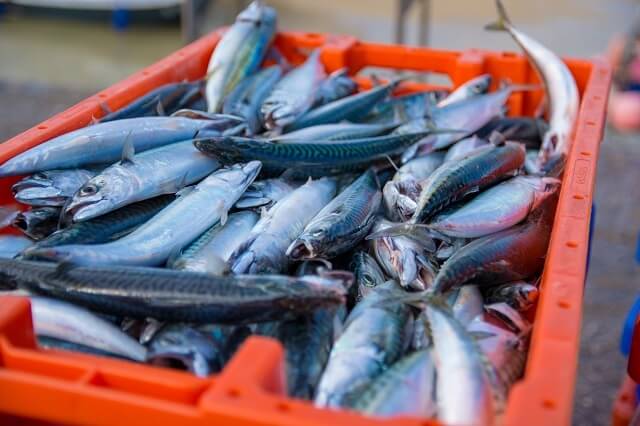What is fish farming?
Fish farming is an agricultural practice in which fish are raised commercially in man-made pools. Fish farming is a relatively new industry and has grown rapidly in recent years. There are two main types of fish farming: Extensive and Intensive.
Most fish that are farmed are food fish, such as salmon, carp, and catfish. Other common farm-raised fish include tilapia, trout, and eels. Some people also keep ornamental fish, such as goldfish and koi, in ponds on their property.
The global fish farming industry is worth billions of dollars and is continuing to grow. Fish farming offers a sustainable way to produce seafood for a growing population without overfishing wild fish stocks.
The benefits of fish farming
Fish farming is a great way to produce fresh, healthy fish while being environmentally sustainable. Here are some of the benefits of fish farming:
-You can control the quality of the fish. When you farm your fish, you can ensure that they are raised in clean conditions and are well-fed. This results in healthier, tastier fish.
– It is more environmentally sustainable to farm fish than to catch them in the wild. Fish farming uses less water and generates less pollution than traditional fishing methods.
-You can make a profit from selling your farm-raised fish. If you sell your fish to restaurants or markets, you can earn a good income from your farm.
The different types of fish farms
There are two main types of fish farming: Extensive and Intensive.
Extensive Fish Farming
Extensive fish farming is a form of aquaculture in which fish are raised in ponds outdoors. This method is frequently employed in developing nations with limited resources and labor.
Extensive fish farming is typically conducted in medium- to large-sized ponds or water bodies. Fish production relies solely on the water’s natural productivity, which is only slightly or moderately enhanced.
Extensive fish farming has numerous benefits. It is simple to set up, requiring neither expensive equipment nor highly trained personnel. Additionally, extensive fish farms can be situated close to markets, reducing transportation expenses.
However, extensive fish farming also has some disadvantages. The yield per unit area is lower than with intensive aquaculture, resulting in higher production costs. In addition, the risk of disease is higher in open-air systems, and it can be more difficult to regulate water quality.
Intensive Fish Farming
Aquaculture, also known as intensive fish farming, is a type of agriculture in which fish are raised in tanks or ponds. The main difference between intensive and conventional fish farming is the level of husbandry. In intensive fish farming, the temperature, pH, and oxygen levels of the environment in which the fish are raised are carefully regulated. Consequently, more fish can be produced in a smaller space than with conventional methods.
Intensive fish farming has numerous advantages over conventional techniques. First, it is much more efficient in terms of land usage. Intensive farms can be situated close to urban areas, reducing the need for live fish transportation. Second, diseases and parasites can be better managed on intensive farms. Farmers can reduce the occurrence of these issues by exercising careful environmental control. In addition, because young fish are not exposed to predators and other environmental dangers, survival rates in intensive fish farms are typically higher.
Despite these benefits, intensive fish farming does have some disadvantages. First, a high level of management and technological expertise is required. Farmers must be able to monitor conditions and make necessary adjustments constantly. Second, if intensive farms are not managed properly, they can pollute water sources. Pollutants from intensive farms can accumulate in water and contaminate groundwater and even drinking water.
How to start a fish farm
If you are thinking about starting a fish farm, there are a few things you need to consider before taking the plunge. Fish farming can be a rewarding and profitable business, but it is important to do your homework before getting started. Here are a few things to keep in mind when considering starting a fish farm:
1. Know your market. Who will you sell your fish to? Restaurants? Grocery stores? Direct to consumers? Depending on who your customers are, there is a big difference in the type of operation you’ll need to run.
2. Consider the type of fish you will raise. Will you raise freshwater fish or saltwater fish? What type of fish is in demand in your area? There is a lot of infrastructures required to raise salt water fish successfully, so fresh water may be the way to go if you are on a budget.
3. Location is key. You’ll need to find a property with the right kind of water for the type of fish you want to raise. You’ll also need to make sure the property has enough land for the size operation you envision.
4. Get expert advice. There are many different aspects to running a successful fish farm, from stocking and feeding your fish to maintaining proper water quality. Getting advice from experts in the field is important before getting started.
5. Have realistic expectations. It takes time and effort to build a successful fish farm. Don’t expect to turn a profit overnight – it takes patience and hard work to make a fish farm successful.
The business side of fish farming
When fish farming, you must consider more than just raising fish. You must also consider the business side of things, such as what type of fish you will farm, how you will sell your fish, and what business model you will use.
There are a few different types of fish that are commonly farmed, such as salmon, tilapia, and catfish. Each type of fish has its unique set of requirements for housing, feeding, and care. You will need to do some research to determine which type of fish is best suited for your particular climate and location.
Once you have decided on the type of fish you want to farm, you need to come up with a business plan. This should include a marketing strategy for selling your fish. You may choose to sell directly to consumers through a farm stand or farmers market, or you may sell to restaurants or other businesses. You will also need to decide on a pricing strategy.
Fish farming can be a profitable business if done correctly. There is a growing demand for fresh seafood, so there is plenty of opportunity for those willing to do the work. With some planning and research, you can be successful in the fish farming business.
Conclusion
Fish farming can be a very profitable business, but there are also some risks involved. If you’re considering starting a fish farm, it’s important to do your research and ensure you understand all the ins and outs of the business. We hope this article has given you some useful information to get you started.







